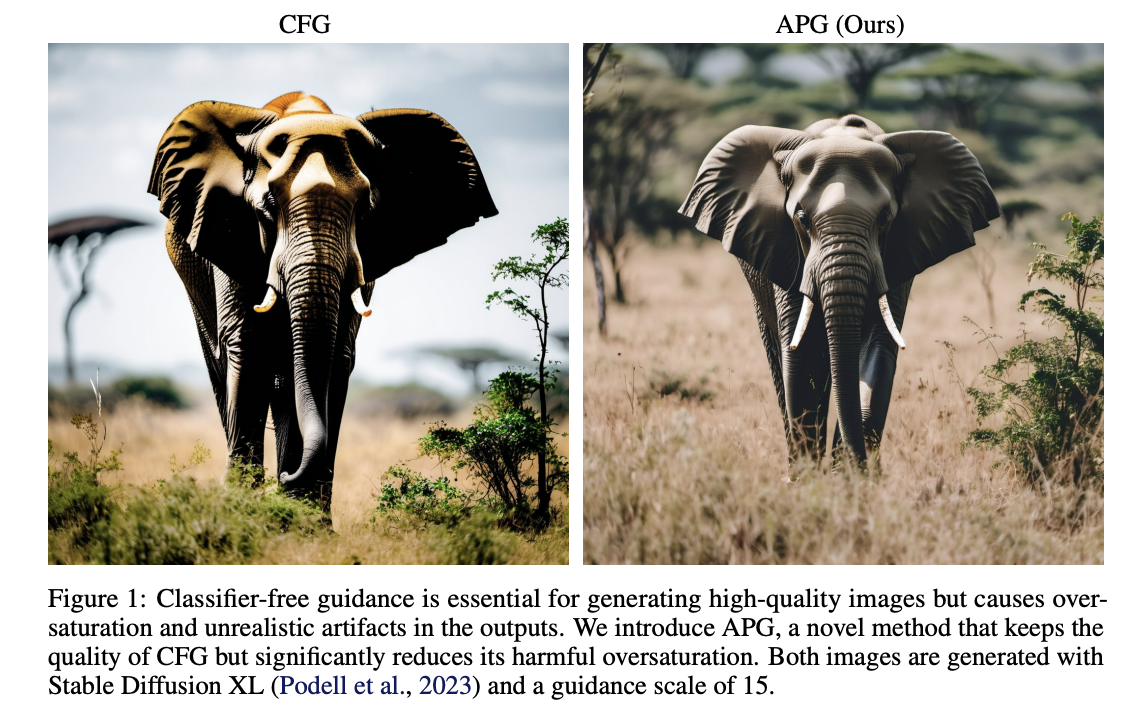
Understanding Classifier-Free Guiding (CFG)
Classifier-Free Guiding (CFG) plays a crucial role in improving image generation quality in diffusion models. It helps ensure that the images produced closely match the input conditions. However, using a high guidance scale can sometimes lead to issues like artificial artifacts and overly bright colors, which can reduce image quality.
Enhancing CFG Efficiency
Researchers have revisited CFG and proposed changes to make it more effective. They suggest splitting the CFG update into two parts: an orthogonal component that enhances image details and a parallel component that can cause oversaturation and artifacts.
Reducing Oversaturation
By down-weighting the parallel component, the model can still generate high-quality images without the negative effects of oversaturation. This adjustment allows for greater control over image production, enabling the use of higher guidance scales while maintaining realistic results.
New Techniques for Stability
The researchers also linked CFG to gradient ascent, a common optimization method. They introduced a unique rescaling and momentum technique for CFG updates. This approach improves update efficiency and stability during the sampling phase.
Introducing Adaptive Projected Guidance (APG)
The new method, Adaptive Projected Guidance (APG), retains the benefits of CFG while allowing for higher guidance scales without the risk of oversaturation or unnatural artifacts. APG is user-friendly and does not add extra computational load during sampling.
Proven Effectiveness of APG
Tests show that APG works well with various conditional diffusion models and samplers. It improves key performance metrics like Fréchet Inception Distance (FID), recall, and saturation scores, while maintaining precision similar to traditional CFG. This makes APG a superior and adaptable solution for generating high-quality images in diffusion models.
Explore More
Check out the Paper for detailed research insights. Follow us on Twitter, join our Telegram Channel, and connect with our LinkedIn Group. If you appreciate our work, subscribe to our newsletter and join our 50k+ ML SubReddit.
Upcoming Event
RetrieveX – The GenAI Data Retrieval Conference on Oct 17, 2023.
Transform Your Business with AI
Stay competitive by leveraging Refining Classifier-Free Guidance (CFG) and Adaptive Projected Guidance (APG) for high-quality image generation. Here’s how:
- Identify Automation Opportunities: Find key customer interaction points that can benefit from AI.
- Define KPIs: Ensure your AI initiatives have measurable impacts on business outcomes.
- Select an AI Solution: Choose tools that fit your needs and allow for customization.
- Implement Gradually: Start with a pilot project, gather data, and expand AI usage wisely.
For AI KPI management advice, connect with us at hello@itinai.com. For ongoing insights into leveraging AI, follow us on Telegram or Twitter.
Enhance Your Sales and Customer Engagement
Discover innovative solutions at itinai.com.

























